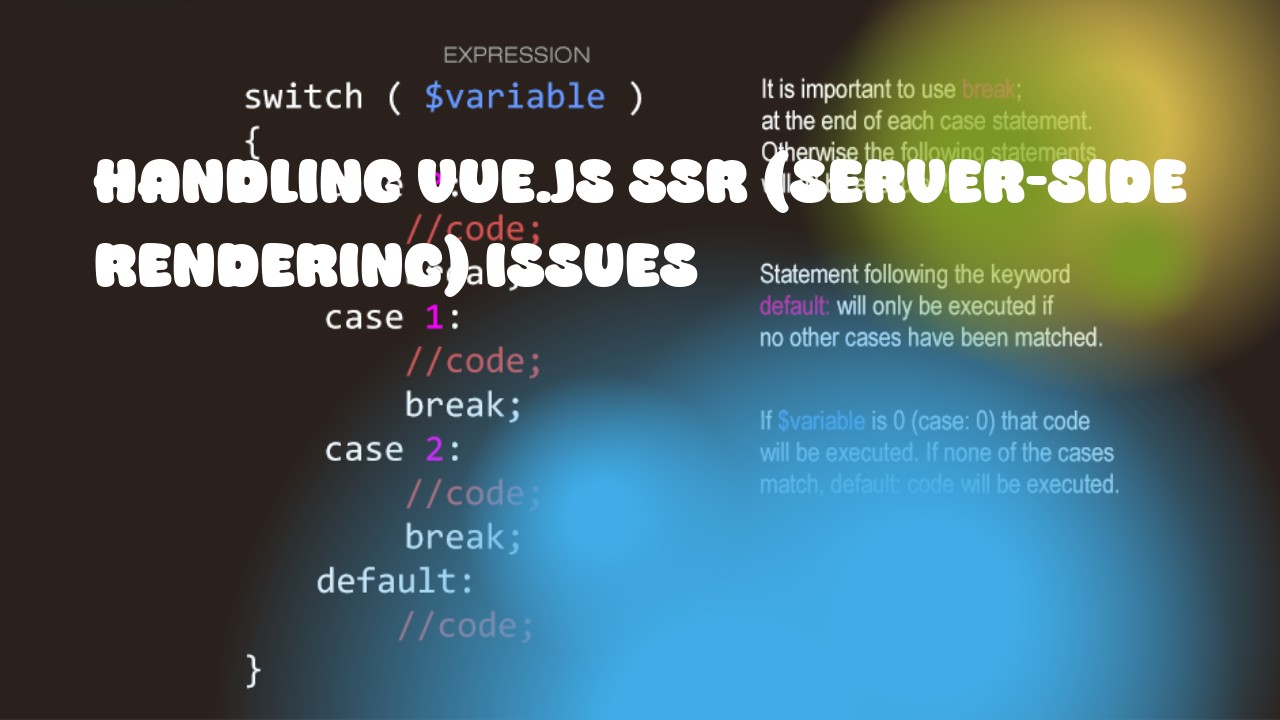Vue.js is known for its excellent server-side rendering capabilities, which allow it to generate static HTML pages on the server-side that are sent to the client's browser. However, like any technology, there may be issues with Vue.js SSR that can arise. Here are some tips for handling these issues:
-
Installation and Setup: Make sure you have installed all necessary dependencies for Vue.js SSR. Use
npm run build --modernto create a modern optimized version of your application. -
Check Server Configuration: Ensure that your server is properly configured to serve the static files generated by Vue.js SSR. This could include setting up a reverse proxy or modifying your server's configuration file.
-
Error Handling: Use error handling mechanisms such as
try-catchblocks to catch and log any errors that may arise during Vue.js SSR. This will help you identify the root cause of the issue. -
Debugging: Use debugging tools such as Vue Devtools or browser dev tools to inspect the rendered HTML on the client side, compare it with the server-side rendered HTML, and identify any discrepancies.
-
SEO Optimization: Make sure that your Vue.js SSR application is optimized for SEO by using meta tags, proper title and description tags, and structured data markup.
-
Security: Ensure that your Vue.js SSR application is secure by implementing measures such as input validation, CSRF protection, and XSS prevention to prevent any security vulnerabilities.
-
Deployment: Make sure to deploy your Vue.js SSR application on a server with sufficient resources and performance to handle the load of multiple concurrent users.

